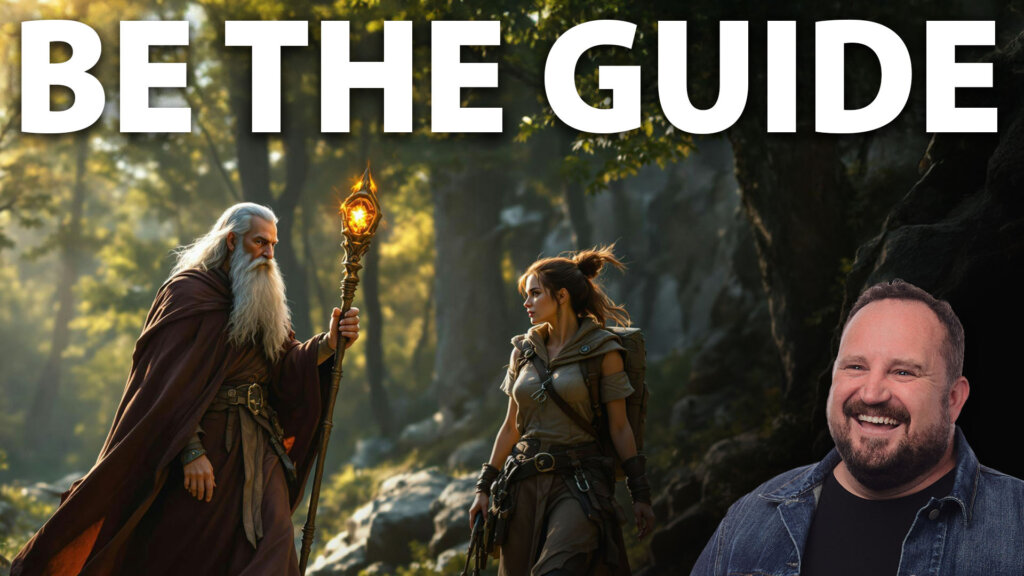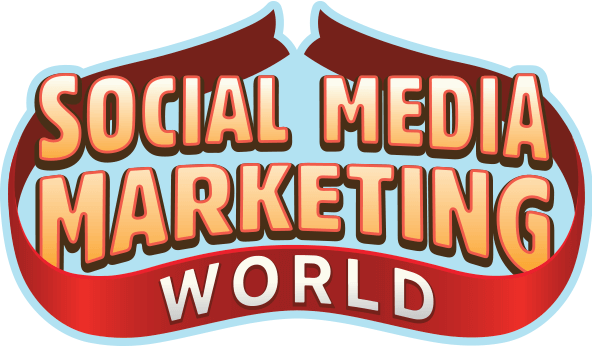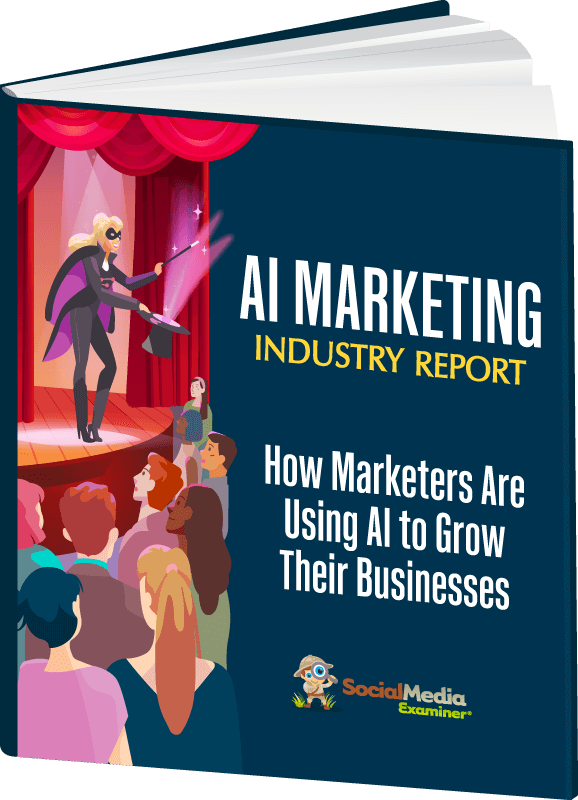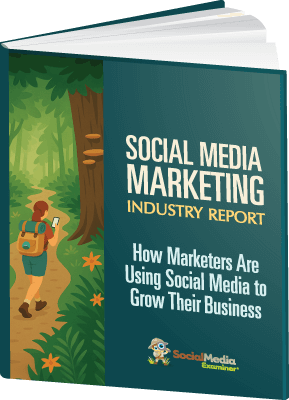Are you making it too hard for customers to understand what you do? Is unclear messaging hurting your conversions?
In this article, you’ll discover how to align sales and marketing using a story framework and why many marketers get storytelling wrong.

Why Marketers Need to Understand How to Tell a Good Story
The term “Story” has become a buzzword in marketing and sales circles, but according to Dr. JJ Peterson, most marketers don't understand what makes a good story and why story is so powerful.
Our brains always seek information that can help us survive and thrive. At the same time, our brains are designed to filter out information we cannot understand quickly. For example, imagine you are in a stadium. You would be unlikely to know how many chairs were in the stadium, but you would be very likely to know where to find the exits.
The story you tell and how you tell it matter in today's environment. According to research, the average person receives between 3,000 and 5,000 commercial messages daily. That's just commercial messages—not including all the other information competing for our attention.
The right story, told in the right way, effectively presents information in an interesting and memorable way that ultimately moves customers to action.
The 7 Elements of a Marketing Story
At its simplest, there are seven elements to a good marketing story:
- What your customer wants
- What problem your customer is experiencing
- How do you position yourself as the guide
- The plan you give them
- The call to action
- The successful outcome
- The failure they avoid
These elements, based on the hero's journey in classic storytelling, will help you tell a clear story about the hero (your customer) who wants something, encounters a problem, meets a guide (your company), receives a plan, is called to action, and experiences stakes in the form of either success or failure.
The beauty of this framework is its flexibility. Peterson explains that this “problem, value, stakes, call to action” model can be reduced to fit in 30 seconds or expanded to fill 90 minutes. Regardless of the format, you maintain the same structure and adjust the time or space you devote to each element based on the medium.
How to Use Story in Your Marketing
#1: Find Your Stages
The first step is identifying where you want to show up in front of new audiences of potential customers—what Peterson calls stages.
While these places can be literal stages, they also include:
- Podcasts
- Social media platforms
- Conferences
- Blogs
- Professional networks
- Email lists
- Webinars
- YouTube channels
- Sales pages or videos
Map out where you'll put your efforts into showing up for the next 6 months.
#2: Clarify What Your Customer Wants
Don't overcomplicate this stage. If you own a lawn care service, your ideal customer wants a nice-looking yard. If you own a software security company, your ideal customer wants to protect their digital assets.
Once you clarify what your ideal customer wants, you can identify the value you will deliver in each space. What they want from you in a reel will differ from what they want from you in an article, and both will differ from what they want from you in a webinar.
AI Is No Longer Optional for Marketers—Ready to Master It?

Join over a thousand forward-thinking marketers at AI Business World—a conference-in-a-conference at Social Media Marketing World.
Get two days of practical AI training where you'll discover:
✅ Systems that 3x your output—leaving time for strategy and creativity
✅ Proven strategies you can deploy right away—no guesswork, no wasted budget
Become the indispensable AI expert your company needs.
GET YOUR TICKETS—SAVE $400Pro Tip: Rank the value assets based on what will be most useful to your customers and what you can create most quickly.
Focus On Your Customer's Need, Not Yours
One of the most common mistakes companies make is focusing on what they want (leads, sales, etc.) instead of what the customer wants.
When companies focus on telling their own story to achieve their objectives, they position themselves outside the narrative their customers are living. And customers can sense this. They instinctively know the company is simply trying to make a sale rather than helping them reach their goal.
When you focus on working with customers to help them get what they want rather than pushing your product—whether you have that product or not—they begin to trust you as a guide who is there to help them win.
River Pools and Spas helps people understand whether a fiberglass, concrete, or vinyl liner pools is the right choice for them, even though the company only sells in-ground fiberglass pools.

Peterson has worked with the world's largest mattress company, which traditionally sells to consumers through franchised mattress stores. Initially, when approaching store owners, they focused on how great their mattresses were and why stores needed to carry them.
To differentiate from competitors and reframe their approach, they asked: “What does the mattress store actually want?” The answer was simple: to sell more mattresses—regardless of the brand. So, instead of creating a one-sheet that talked about how great the company's mattresses are, they created a one-sheet that helped salespeople sell all mattresses better.
That generosity in marketing pays off: “I don't think you're ever punished for being a generous brand, especially when you're giving away a ton of value. When you're giving a ton of information and things that help them win, they're going to see that. And ultimately, you're going to get that back tenfold.”
Shifting from talking about themselves to helping store owners succeed led to a significant jump in new sales and partnerships for the mattress company.
#3: Tell Your Story
Follow this framework to tell marketing stories that position your customer as the hero…
Remember, you're not actually trying to sell here. You're trying to name and agitate a problem for which you have a solution. The idea is to give small pieces of the solution away that ultimately lead to a conversion, such as a sale, an email opt-in, etc.
Ready to Supercharge Your Marketing Strategy?

Get expert training and an unbeatable conference experience when you attend Social Media Marketing World—from your friends at Social Media Examiner.
Broaden your reach, skyrocket your engagement, and grow your sales. Become the marketing hero your company or clients need!
🔥 Save $900 on an All-Access ticket. Sale Ends Friday! 🔥
GET THE DETAILSName the Customer's External and Internal Problems to Hook Your Customer
If you're watching a movie and the main character is having a great day, and then they continue to have a great day, that's a very boring movie.
Stories don't become interesting or memorable for us until a problem appears. What does that look like for a marketer?
Don't start by talking about your product. Start by addressing the problems your audience faces to hook them into the story immediately.
There are two types of problems to address:
- External problems are your customers' tangible challenges—for example, an overgrown lawn or a website that isn't generating leads.
- Internal problems are the emotional consequences of those external problems—how they make your customers feel.
For example:
- “My yard is overgrown” is an external problem. “I'm embarrassed by the state of my yard” is an internal problem.
- “87% of businesses are prioritizing the internal implementation of AI over the next 5 years” is an external problem. “If I don't learn to use AI, I'll lose my job to someone who can use AI” is an internal problem.
This distinction between external and internal problems is crucial for marketers to understand.
Why? “People often go shopping to pay to solve an external problem, but they make buying decisions to solve an internal problem,” Peterson explains.
By naming the external problem and then agitating with the internal problem before transitioning to your solution, you make a customer far more receptive to the value you bring in your message.
Returning to the lawn care service, your opening might be:
“We're well into spring, and your yard is overgrown. Are you embarrassed by your yard's lack of curb appeal? Does the thought of tackling those weedy flower beds week after week stress you out? We get it. Grass grows fast, and weeds grow faster. It's overwhelming.”

Pro Tip: How long should you focus on the problems? Peterson offers these content-specific guidelines:
- For a 30-60-second reel, the first 10 seconds
- For an hour-long keynote, the first 5-10 minutes
- For a half-hour webinar, the first 5 minutes
- For a blog post, the opening paragraphs
Position Your Brand as the Guide With Value to Offer
After establishing the problem, you position yourself as the guide. This section should make up the largest portion of your content. Whether you're sharing specific tips or broader lessons you've learned, the key is to show how your knowledge can help your audience overcome their challenge or reach their goal.
Begin by demonstrating empathy and authority relevant to your customer's situation.
If the problem is that someone needs to lose 30 pounds, empathy is, “I've been in your shoes, and I've struggled.” Empathy forges emotional connections. Authority is, “I learned how to lose 30 pounds safely, and I've not regained it. Here are three things I learned along the way.”
Present the Stakes
Close by addressing what's at stake for your audience. In storytelling terms, this means outlining both the potential failure and success:
- Failure: What happens if they don't take your advice or use your solution? How will their problems persist or worsen?
- Success: What positive outcomes will they experience if they follow your guidance?
Close With a Clear Call to Action
Finally, tell your audience exactly what to do next:
- Sign up for this
- Buy this
- Schedule a call
Being direct with your call to action isn't pushy—it's a service to your audience. They need to know what to do to have a successful ending to their story. “If you shrink in that moment as their guide, you actually are doing them no service,” says Peterson.
Dr. JJ Peterson, the head of StoryBrand, helps companies, authors, and thought leaders clarify their message. He hosts the Marketing Made Simple podcast, and his book is Marketing Made Simple: A Step-by-Step StoryBrand Guide for Any Business. JJ also teaches the Master of Marketing program at Vanderbilt University. Find him on Instagram, LinkedIn, and X.
Other Notes From This Episode
- Connect with Michael Stelzner @Stelzner on Instagram and @Mike_Stelzner on X.
- Watch this interview and other exclusive content from Social Media Examiner on YouTube.
Listen to the Podcast Now
This article is sourced from the Social Media Marketing Podcast, a top marketing podcast. Listen or subscribe below.
Where to subscribe: Apple Podcasts | Spotify | YouTube Music | YouTube | Amazon Music | RSS
✋🏽 If you enjoyed this episode of the Social Media Marketing podcast, please head over to Apple Podcasts, leave a rating, write a review, and subscribe.
Stay Up-to-Date: Get New Marketing Articles Delivered to You!
Don't miss out on upcoming social media marketing insights and strategies! Sign up to receive notifications when we publish new articles on Social Media Examiner. Our expertly crafted content will help you stay ahead of the curve and drive results for your business. Click the link below to sign up now and receive our annual report!
AI Is Transforming Marketing—Are You Keeping Up?

Marketers are rapidly adopting AI to transform their work. Our new 2025 AI Marketing Industry Report surveyed over 730 marketers to reveal the tools, tactics, and trends shaping the industry, including
🔥 90% of marketers save time with AI—discover the top use cases
🔥 The 5 biggest challenges marketers face with AI and how to overcome them
GET THE AI MARKETING INDUSTRY REPORT

